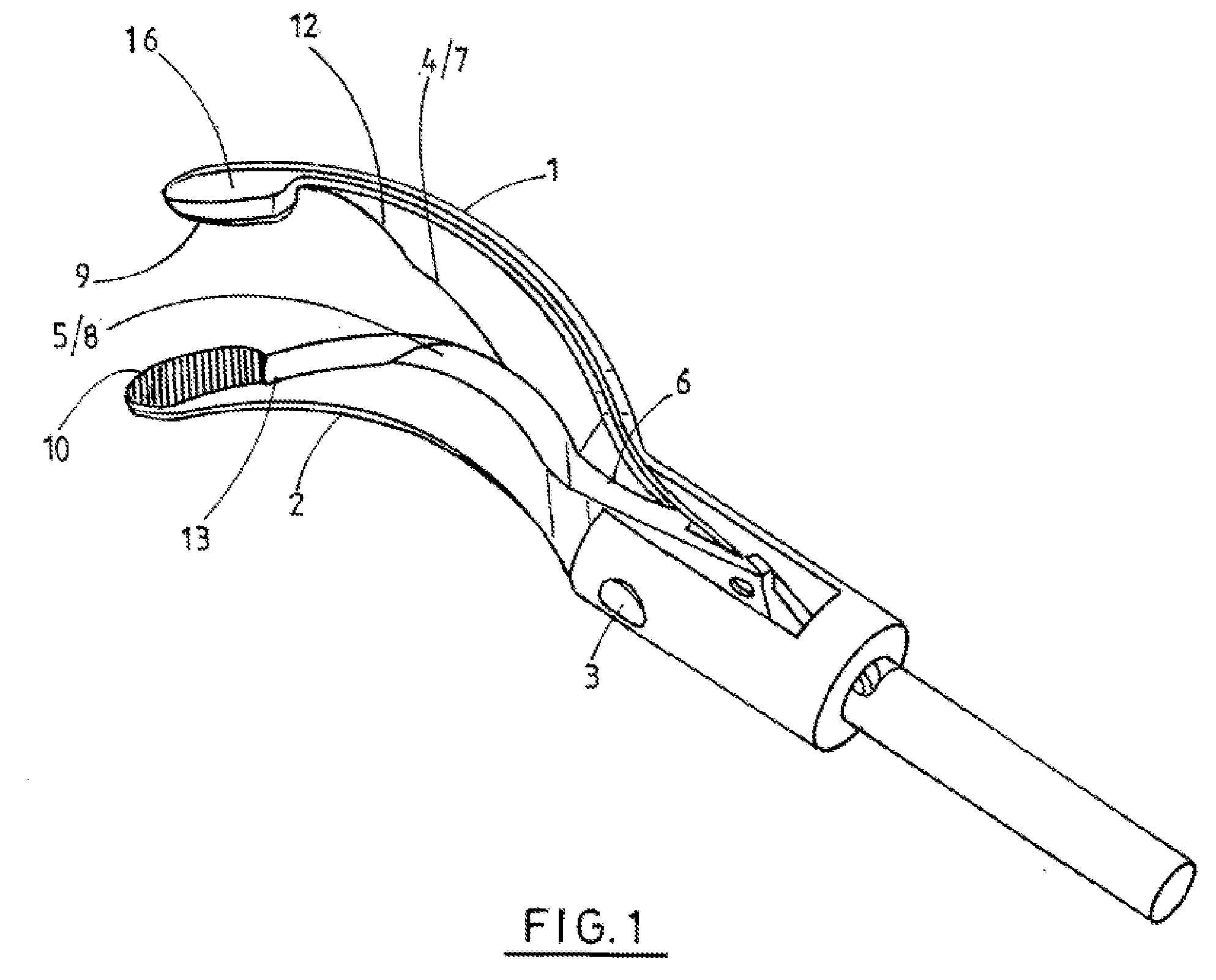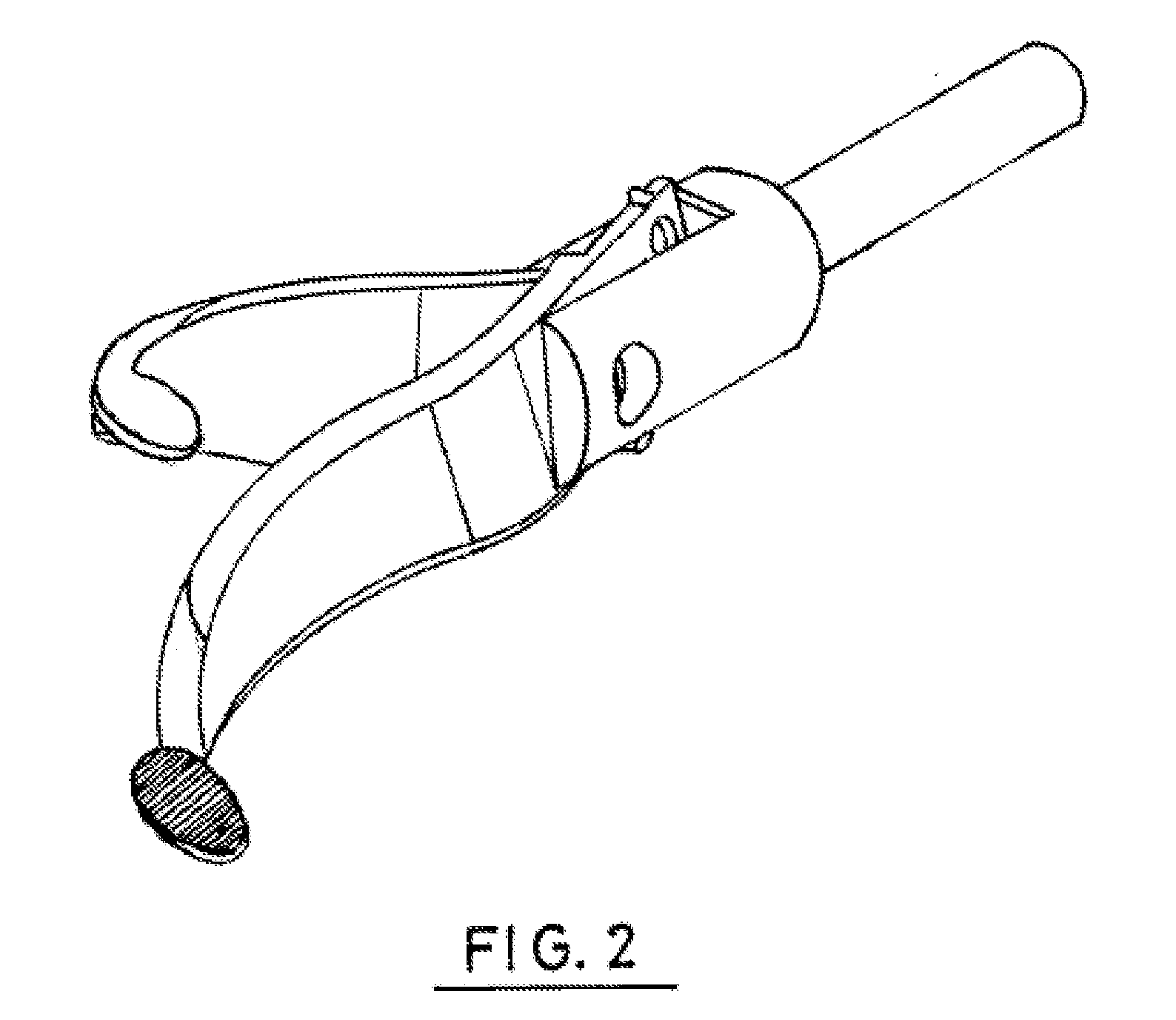Multipurpose Surgical Tool
a multi-functional, surgical technology, applied in the field of surgical tools, can solve the problems of obstructing the surgeon's vision and his or her ability to appropriately manipulate tissues, increasing the time taken to complete surgery, and alternating between tools increases the risk of unintended damage to tissues
- Summary
- Abstract
- Description
- Claims
- Application Information
AI Technical Summary
Benefits of technology
Problems solved by technology
Method used
Image
Examples
Embodiment Construction
[0056] The invention provides a simple multi-functional surgical tool that has a cutting means for cutting tissue and surgical thread, and a means to grasp and hold tissues and surgical needles. Importantly, the tool has a buffer region between the cutting and grasping means. Optionally, the tool also has a means to cauterise tissue. The tool may be adapted for use in endoscopic or laparoscopic surgery or in open surgery. The tool preferably also has a means for separating tissue.
[0057] The multi-functionality of the tool reduces the need to alternate between tools and the need to use several different tools simultaneously. The cutting means provides for effective dissection of tissues and the cutting of surgical thread. The grasping and optional cauterising means of the invention provide for effective control of bleeding. The grasping means also provides an effective needle holding or receiving means. The tissue separation means enables the separation of adjacent tissues.
[0058] T...
PUM
 Login to View More
Login to View More Abstract
Description
Claims
Application Information
 Login to View More
Login to View More - R&D
- Intellectual Property
- Life Sciences
- Materials
- Tech Scout
- Unparalleled Data Quality
- Higher Quality Content
- 60% Fewer Hallucinations
Browse by: Latest US Patents, China's latest patents, Technical Efficacy Thesaurus, Application Domain, Technology Topic, Popular Technical Reports.
© 2025 PatSnap. All rights reserved.Legal|Privacy policy|Modern Slavery Act Transparency Statement|Sitemap|About US| Contact US: help@patsnap.com



